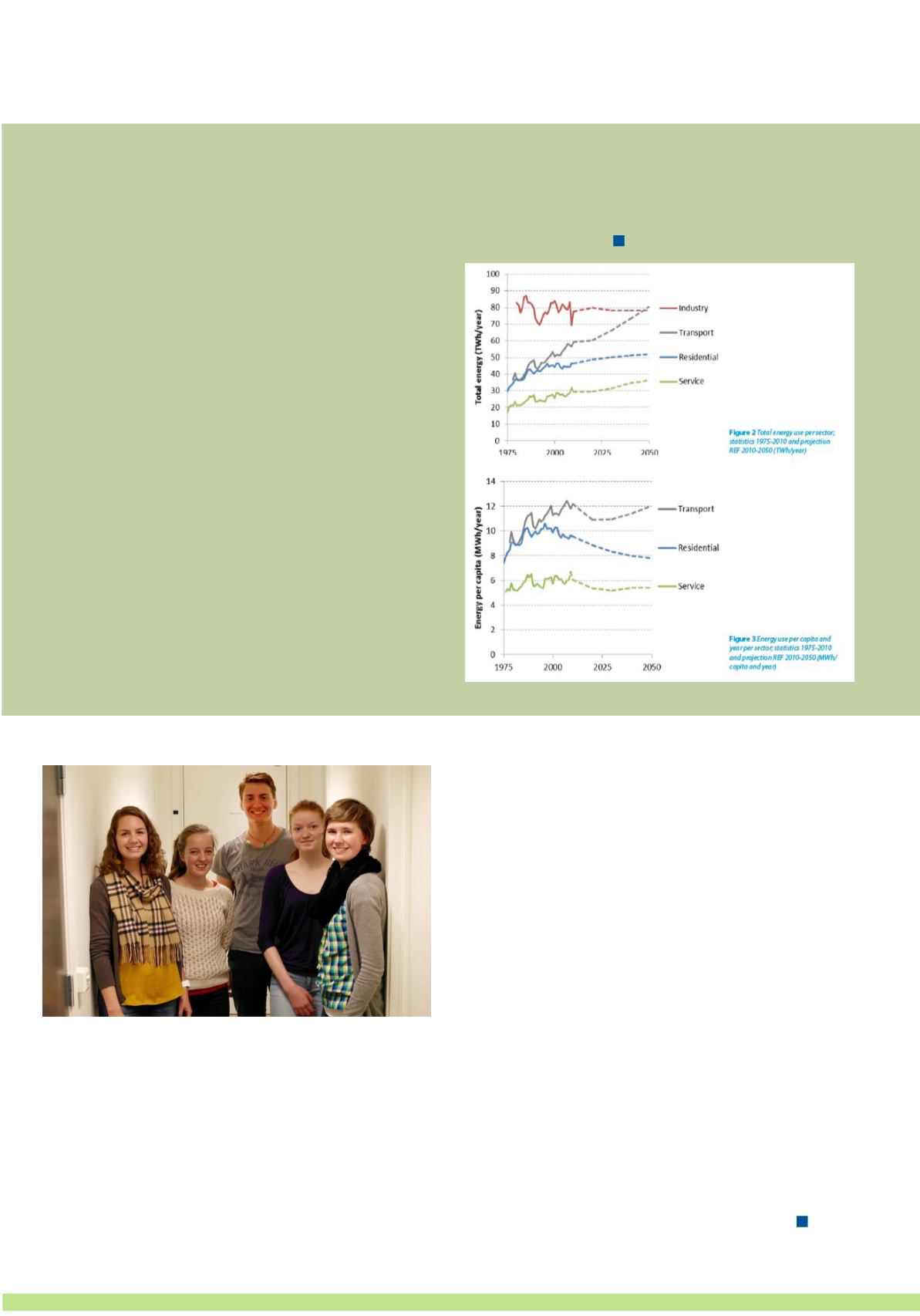

32
CenSES annual report 2015
Dissemination
CenSES position paper on Energy demand
projections
As opposed to most other European countries, Norway
has no official, public energy projection. CenSES has
therefore developed an energy projection towards
2050, with openness to data and detailed discussions
of parameters and resulting energy demand. It is not a
prediction, but a projection, with assumptions based on
discussions among the CenSES partners. The objective
is to have a platform for further analyses within CenSES
and other interested users, where assumptions can
be openly presented. The intention is to develop
alternative paths based on future discussions, as a
way of improving the knowledge of how to achieve a
sustainable future energy system. The work was led by IFE
with support from Høgskulen i Sogn og Fjordane, Uio and
NTNU.
In the reference path, final energy consumption will
increase by 30 TWh to about 250 TWh in 2050. The
increased electricity consumption is 21 TWh to 134 TWh
in 2050. Implementation of profitable energy efficiency
measures can reduce the final energy consumption by 4
TWh in total while the electricity use increase by 7 TWh
(-2% and +6% respectively). In total, profitable energy
efficiency measures including heat pumps can reduce
the energy consumption in 2050 by about 23 TWh.
Illustrations of this, and several other scenarios are included
in this paper as “stories” describing literary how possible
futures might become.
UngEnergi
UngEnergi is a group of students who seeks to improve
secondary school students understanding and interest
in renewable energy. Our main focus area is to engage
teachers to include information about the value of
renewable energy in their teaching lessons. This has also
been our top focus in 2015. To do so we have worked
on a number of projects, such as: school projects (build
your own solar powered car), school “packages” (pre-built
materials to be used in class, i.e. about solar power) and
exercises directly related to the texts and materials found
on our website.
A marketing tool that UngEnergi has used with great results
in 2015, has been to attend seminars and various gatherings.
This has been a great way tomarket thewebsite both towards
teachers and students. In 2015 UngEnergi participated in
“Trondheim Maker Faire”, “Trønderenergi-dagen”, “Juba
Juba-festivalen” and a regional gathering for science and
mathematics teachers. The project also partook in a science
conference in Oslo, proving to be relevant also outside the
region of Trøndelag. A milestone in marketing was also
reached when the regional newspaper Adresseavisen wrote
about the project in February.
Another exciting area that UngEnergi has worked on in 2015,
has been to develop new content and design for our web-
page. To be able to convey what renewable energy is, and
why it is important, our website needs to cover all aspects of
the subject. The result of this will be unveiled in 2016.
Be sure to check out
www.ungenergi.noin the following
months as new and exciting material will be revealed.
Some of the members in UngEnergi. From left to right: Kristine Klock
Fleten, Anna Solberg, Erling Gjeset, Kari Postmyr Jystad, Martine Klock
Fleten
















